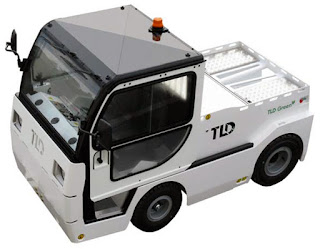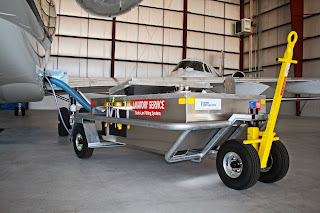The Costliest Aviation Accidents and Issues and How to Avoid Them
Every year, the airlines lose billions of dollars to accidents and other
damage incidents. Beyond the financial risk and loss, accidents and
damage incidents are responsible for a number of collateral and
peripheral consequences. Those consequences range from passenger
inconvenience and loss of business to, far worse, injury or death.
Unfortunately, as airsides at airports and aerodromes are generally busy, borderline chaotic places, with ground support equipment (GSE) like aircraft pushback tractors and baggage carts bustling past massive airliners, accidents and damage incidents can have a lot of sources. That also leaves airport management, contractors, and third parties vulnerable to liability costs. The good news is: most of those can be mitigated or avoided altogether.
Ramp Damage: Towing and Collision Incidents
According to the research, the total cost of ramp damage alone to the airlines is around $10 billion every year. The average cost of each accident was $250,000. It’s a mind-boggling sum with a variety of causes. Most of those involve the interaction of GSE and aircraft. Examples include belt and cargo loaders and other services carts and vehicles colliding with aircraft, “ramp rash” incidents with composite-skinned aircraft that look minor but have done below-the-surface damage, and towing damage from an aircraft tug or pushback.
A big part of preventing ramp damage relies on training. Even if they’ve operated vehicles or carts that seem comparable, no ground crew should be using any GSE that they haven’t received specific training for. And that training should be ongoing. Even long-time ground crew may not be familiar with best practices for composite-skinned aircraft.
Sometimes it’s the smallest things that cost the most, like birds and little pieces of metal. Foreign object damage (FOD) costs the top 300 airports in the U.S. alone $1.1 billion annually. While virtually all aerodromes have FOD-removal vehicles equipped with towable or suspension magnets to sweep the grounds, many have yet to advance beyond that basic approach. FOD detection and removal solutions have advanced considerably recently. There are now radar-based FOD-detection vehicles that can scan any airfield within designated boundaries that yield much more comprehensive FOD removal.
The cost of damage and delays caused by bird strikes is even great than that of FOD, at $1.2 billion. While the aviation industry is incorporating and investigating a variety of technological solutions to the problem of bird strikes, it can be one of the most difficult to mitigate. For the time being, among the best options seem to be delaying takeoff or landing (fuel permitting). Flight staff should also be trained on avoiding bird strikes and kept informed of local bird activity around the airport and flight path as to switch to bird-free runways if possible. Last, it’s imperative to remain extremely vigilant for bird activity on final approaches.
About AERO Specialties
As part of their commitment to quality, innovation, and customer service, AERO Specialties ensures that all of their team members, even sales and support staff, are familiar with both the products and the aviation handling and maintenance industry. That attention to company-wide understanding of the business is representative of the ethos that has made AERO Specialties one of the most trusted names in GSE. They offer aircraft pushback vehicles and aircraft tugs, intercom and related audio equipment, deicing vehicles, lavatory carts, snack and drink vehicles, baggage and cargo handling solutions, hydraulic fluid services, an aircraft ground power unit line, towbars, aircraft lighting, and everything else necessary for the successful operation of an airside ground crew.
Optimize the efficiency of your ground crew’s airside operation with GSE from AERO Specialties at Aerospecialties.com
Unfortunately, as airsides at airports and aerodromes are generally busy, borderline chaotic places, with ground support equipment (GSE) like aircraft pushback tractors and baggage carts bustling past massive airliners, accidents and damage incidents can have a lot of sources. That also leaves airport management, contractors, and third parties vulnerable to liability costs. The good news is: most of those can be mitigated or avoided altogether.
Ramp Damage: Towing and Collision Incidents
According to the research, the total cost of ramp damage alone to the airlines is around $10 billion every year. The average cost of each accident was $250,000. It’s a mind-boggling sum with a variety of causes. Most of those involve the interaction of GSE and aircraft. Examples include belt and cargo loaders and other services carts and vehicles colliding with aircraft, “ramp rash” incidents with composite-skinned aircraft that look minor but have done below-the-surface damage, and towing damage from an aircraft tug or pushback.
A big part of preventing ramp damage relies on training. Even if they’ve operated vehicles or carts that seem comparable, no ground crew should be using any GSE that they haven’t received specific training for. And that training should be ongoing. Even long-time ground crew may not be familiar with best practices for composite-skinned aircraft.
Incorporating new technology is also key. Telematic fleet tracking and
coordination can make ground crew GSE operation both safer and more
efficient. Likewise, equipping aircraft tugs
and tow tractors with a force monitoring system, like SiPsHitch from
AERO Specialties, is hugely effective at decreasing or eliminating
towing-related damage to aircraft. The SiPsHitch Linear Force Monitoring
can be included with models of GSE, like the TLD TMX-TTV Aircraft
Towing Tractor Package.
FOD and Bird Damage
Sometimes it’s the smallest things that cost the most, like birds and little pieces of metal. Foreign object damage (FOD) costs the top 300 airports in the U.S. alone $1.1 billion annually. While virtually all aerodromes have FOD-removal vehicles equipped with towable or suspension magnets to sweep the grounds, many have yet to advance beyond that basic approach. FOD detection and removal solutions have advanced considerably recently. There are now radar-based FOD-detection vehicles that can scan any airfield within designated boundaries that yield much more comprehensive FOD removal.
The cost of damage and delays caused by bird strikes is even great than that of FOD, at $1.2 billion. While the aviation industry is incorporating and investigating a variety of technological solutions to the problem of bird strikes, it can be one of the most difficult to mitigate. For the time being, among the best options seem to be delaying takeoff or landing (fuel permitting). Flight staff should also be trained on avoiding bird strikes and kept informed of local bird activity around the airport and flight path as to switch to bird-free runways if possible. Last, it’s imperative to remain extremely vigilant for bird activity on final approaches.
About AERO Specialties
As part of their commitment to quality, innovation, and customer service, AERO Specialties ensures that all of their team members, even sales and support staff, are familiar with both the products and the aviation handling and maintenance industry. That attention to company-wide understanding of the business is representative of the ethos that has made AERO Specialties one of the most trusted names in GSE. They offer aircraft pushback vehicles and aircraft tugs, intercom and related audio equipment, deicing vehicles, lavatory carts, snack and drink vehicles, baggage and cargo handling solutions, hydraulic fluid services, an aircraft ground power unit line, towbars, aircraft lighting, and everything else necessary for the successful operation of an airside ground crew.
Optimize the efficiency of your ground crew’s airside operation with GSE from AERO Specialties at Aerospecialties.com




Comments
Post a Comment